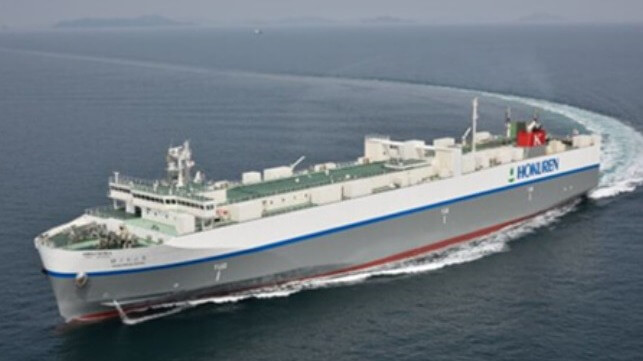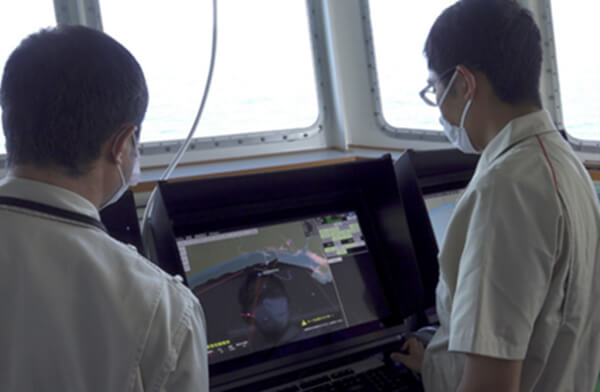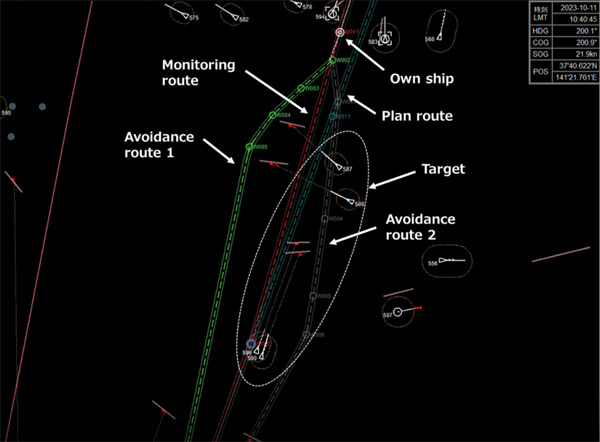K Line Car Carrier Completes Autonomous Navigation Demonstration Voyages

The first demonstration tests were completed last month in the second phase of a Japanese program to develop fully autonomous ships. The tests were conducted on one of K Line’s (Kawasaki Kisen Kaisha) in-service domestic car carriers achieving strong results as part of a broad project that currently involves 51 companies working in several consortiums to develop and test the technology on different vessels.
Sponsored by The Nippon Foundation, the MEGURI 2040 project seeks to develop the necessary autonomous technology and demonstrate it on vessels operating on various domestic routes. The project launched in 2020 and in 2022 conducted its first demonstration tests. In July, they reported that they were preparing for the second phase of demonstrations.
One of the systems, which is being developed in the partnership between K Line, Japan Radio, YDK Technologies, and Kawasaki Kinkai Kisen, was installed on the ro/ro Hokuren Maru No. 2. (6,890 dwt) car carrier which was built in 2016. The vessel which is 568 feet operates between Hitachi Port and Kushiro port a distance of approximately 860 nautical miles.

Validation testing during the demonstration voyages (K Line)
Three test voyages were conducted each lasting three days between October 1 and October 19. K Line reports the autonomous navigation system achieved an average system operation rate of approximately 96 percent in the operational areas. They report that the system achieved a “high degree of accuracy in coastal navigation.”
During the demonstration sea tests, they were able to confirm the recognition, analysis, and decision-making capabilities of the autonomous navigation system. The system was used to navigate while maintaining the normal crew navigation tasks, and in situations where avoidance was necessary. They report that the autonomous navigation system proposed avoidance routes and controlled steering to safely avoid other vessels.

Sample of the routing during the demonstration voyages (K Line)
The effort seeks to further develop the target detection, planning, and actions of the system as part of the second stage of the MEGURI project. In the future, they will utilize the data from the current sea demonstrations to further enhance the autonomous navigation system. The goal is to develop a comprehensive system that can be used with a variety of vessels and routes and have it ready for demonstration in 2025 and commercialization.
The team is also developing the onshore system and ship-to-shore communications systems. They aim to establish continuous monitoring of the vessel’s condition from shore to be able to provide navigational assistance.
The MERGURI 2040 plans to create and demonstrate systems that will operate with a newly built containership, retrofit it to an existing container ship, and ro/ro cargo ship, as well as develop two fleet operation centers. Japan is investing in automation technology as a means of addressing a growing shortage of skilled seafarers. Academics have cited the impact of the aging population and a perception that younger generations find working at sea less attractive. Automation they believe will provide a means to supplement crews to maintain and expand commercial shipping.
